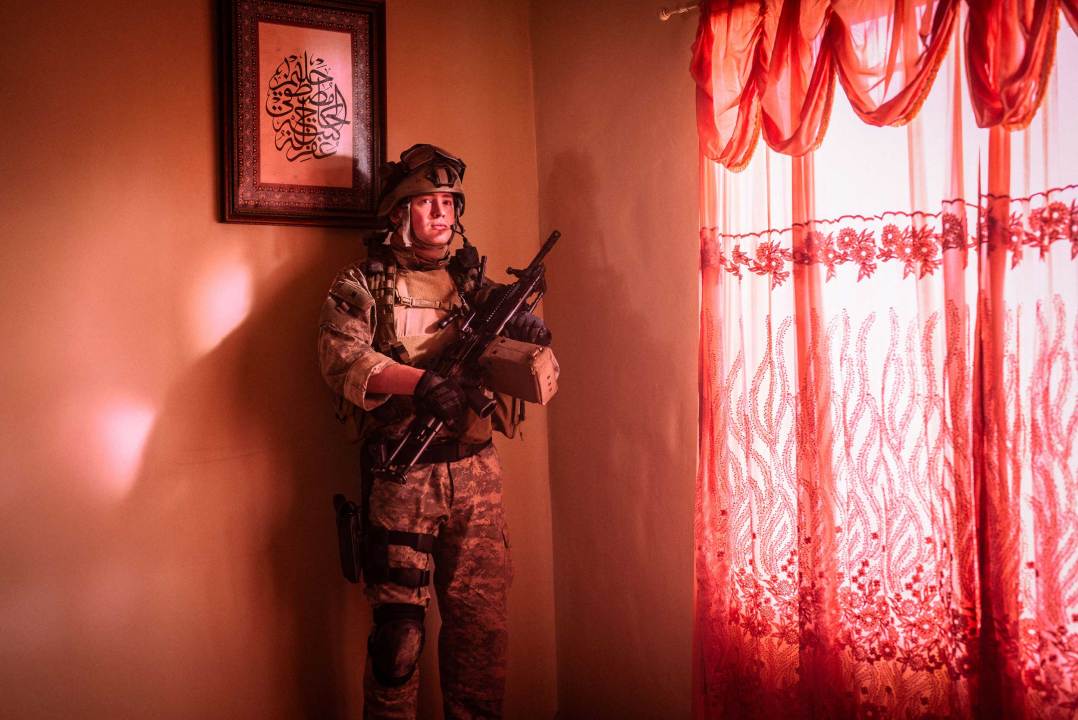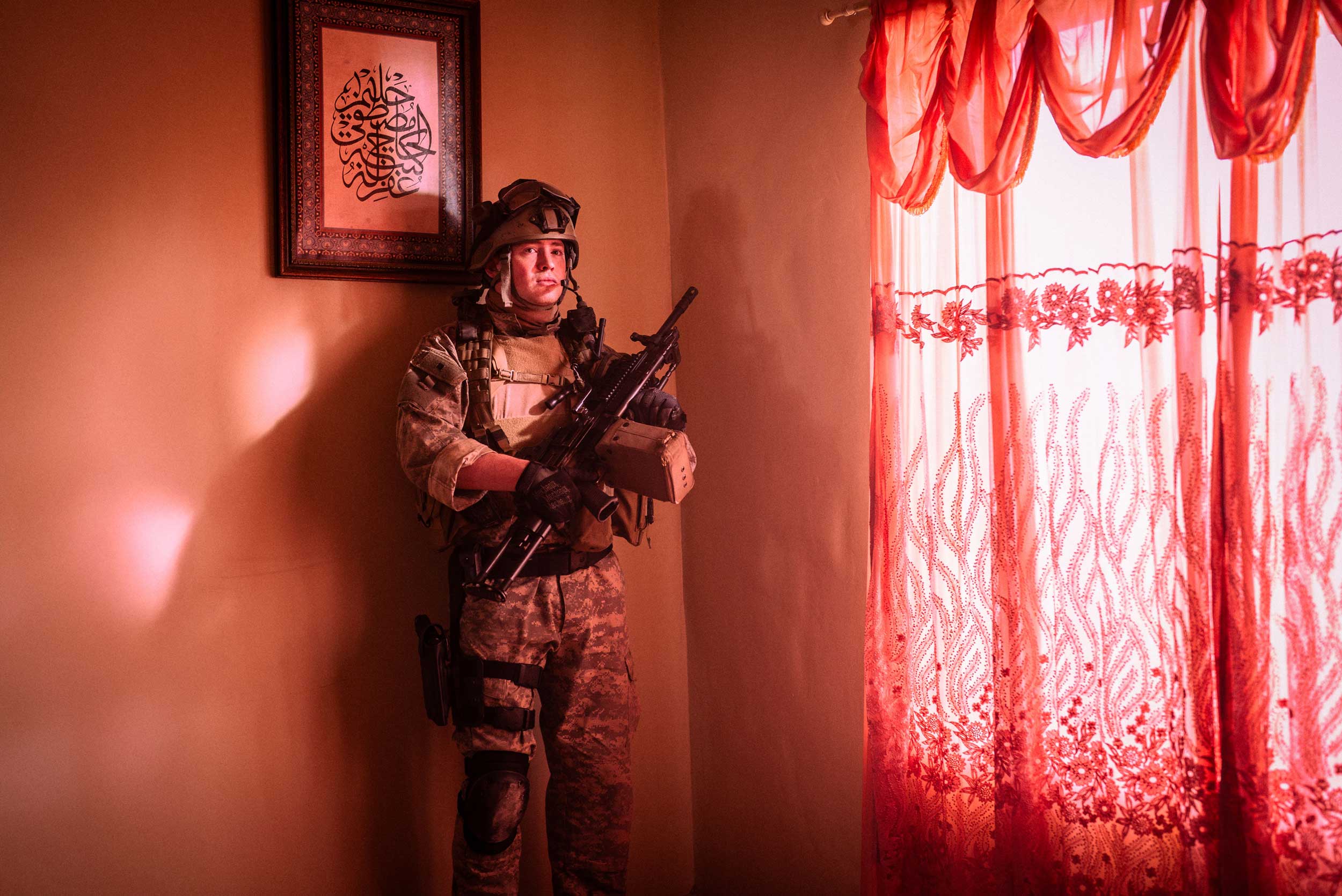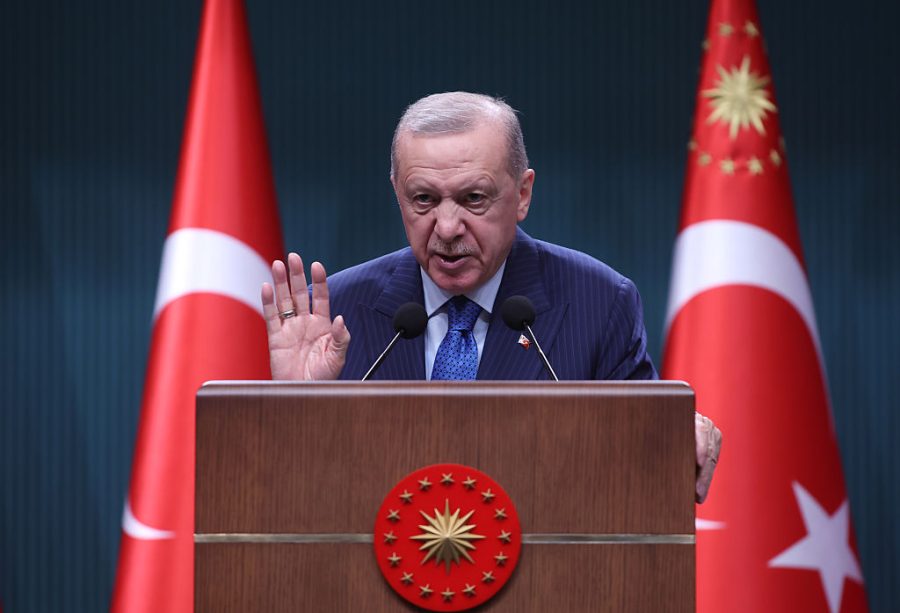In Alex Garland’s new film Warfare, one detail stakes the film’s claim to be the most honest depiction of combat yet. Not the severed foot left lying on an Iraqi street after a bomb blast, nor a wounded US soldier’s screams as a medic bandages up what is left of his leg. Instead, it is that throughout the film’s 20-minute-long gun battle, only one insurgent is shown being felled by a bullet. In real-life combat, enemy fighters do not obligingly linger centre stage – they lurk behind cover, as hard to get a bead on as possible.
This was particularly true of Iraq, where most of the fighting was against a hit-and-run foe that was forever vanishing around the corner. Yet in Warfare, it is not just the baddies who do not follow the standard Hollywood script. Neither do the heroes – if, indeed, one can call them that. The film is based on the memoirs of Ray Mendoza, who worked as a military adviser on Garland’s previous film, Civil War, and who served with a Navy Seal unit in the Iraqi city of Ramadi.
Warfare depicts a grim day in November 2006, when Mendoza’s unit are holed up in a house in a Ramadi suburb, only to be besieged by insurgents. But that is literally all we learn about them. There is no backstory, no docu-drama interviews, none of the usual devices to make us root for them. We do not even learn why they are there, or why they are camped out alone in such an unfriendly neighbourhood. Nor is there any account of why this particular city is so ferociously hostile, with the troops’ only chance of escape via a rescue from two Bradley fighting vehicles.
This is similar to Garland’s hands-off approach in Civil War, which likewise offers no explanation as to why one half of America has taken up arms against the other. Doing so allows him to avoid accusations of editorialising – yet in Warfare, I would argue that a little more background might not have gone amiss.
After all, nearly 20 years have now passed since the events depicted in the film, and to many younger viewers, the conflict may seem like just another distant military misadventure like Vietnam. But while the film is billed as just another routine bust-up in the Iraq war, Ramadi was no ordinary city, and late 2006 was no ordinary time. On the contrary, it was the very lowest point in the occupation, when America was close to giving up on Iraq altogether – and Ramadi was one of the reasons why.
I write as someone who was based in Baghdad as a freelance journalist from 2003-2005, the first two years after Saddam Hussein’s fall. By the time I left, all but a few neighbourhoods of the Iraqi capital were overrun by insurgents – Iran-backed militias in the Shia neighbourhoods, al-Qaeda-backed militias in the Sunni ones. But the real ground zero of anti-US resistance lay an hour’s drive west, in the cities of Ramadi and Fallujah.
At first glance, they are just two drab satellite towns, Iraq’s answer to Slough and Reading, squatting off the main motorway to Jordan. But they were home to tough, conservative Sunni tribesmen, who had troubled successive rulers of Iraq, from Ottoman and British colonialists through to Saddam Hussein. Rather than fighting them head on, Saddam co-opted them, handing them lucrative jobs as enforcers in his army and security services. When America toppled him, they were disenfranchised overnight, leaving them with little to lose by taking up arms.
Within three months, both cities were hotbeds of rebellion. While US patrols elsewhere still got friendly waves, those in Ramadi and Fallujah got scowls, volleys of stones and, soon, rocket-propelled grenades. A year on, the area was dubbed the ‘Graveyard of the Americans’ – not that casualties got anything so dignified as a burial. When four guards for the US security firm Blackwater were ambushed in Fallujah in March 2004, their burnt, mutilated bodies were strung up on a bridge by a cheering crowd.
That incident – reminiscent of the Black Hawk Down horror in Somalia a decade before – earned Fallujah global notoriety. But while Ramadi never achieved the same infamy, it was just as bad, if not worse. In April 2004, 12 US Marines died during fighting there, one of the biggest single losses of life in the Iraq campaign. By late 2006, when the events in Warfare unfolded, the city was overrun by al-Qaeda, by then the dominant armed group in Sunni areas. Any US forces who fell into their hands could expect torture and a videotaped beheading.
Despite this, US troops would regularly hole up in villas around the city (much of whose population had fled), using them as hideouts for surveillance and sniping. It was not uncommon for such hideouts to get rumbled – as Jim Gilliland, who served as a sniper there,told me in an interview a few years ago. It led to scenes that even the makers of Warfare might have baulked at.
‘There were a couple of occasions when other sniper teams were overrun, and their bodies were tortured and mutilated,’ he said. ‘On one occasion, we had an engagement, and before the QRF (Quick Reaction Force) could extract us, we had about 150 men surrounding our building. Eventually some Bradleys dispersed them, but it was pretty close. It makes you feel the pulse of life a little, shall we say?’
The sheer terror of such sieges is not the only thing Warfare gets right. It also nails the period detail, from the garish, patterned Iraqi blankets on which the snipers rest their rifles, to the Opel saloon car that roams the neighbourhood in suspicious fashion. Opels were long the insurgents’ favoured wheels, offering a combination of speed and affordability (plus an optional gun-turret courtesy of the electronic sunroof).
Many viewers have interpreted the film as simply confirmation of the senselessness of the Iraq war
Yet in the absence of context, many viewers have interpreted the film as simply confirmation of the senselessness of the Iraq war. The closing scene, featuring the insurgents emerging back onto the streets after the fight is over, implies the Americans have a Sisyphean, whack-a-mole task. Why not just pull out? Yet at the time, it was not quite that simple.
By 2006, US troops were not the only ones under fire in Iraq. The country was spiralling into a savage Sunni-Shia civil war, with sectarian death squads murdering thousands every month. With the US body count also spiking, many in America wanted to withdraw and leave the warring sides to it. Instead, President George W. Bush pressed ahead with the ‘troop surge’ the following year, gambling yet more soldiers’ lives on what many already feared was a lost cause. But the groundwork was done the year before, through gruelling counter-insurgency operations in cities like Ramadi.
For the next four years, sectarian violence ebbed in Iraq, allowing the US an orderly pull-out by 2011, rather than the Saigon-style rout that happened in Afghanistan a decade later. True, by 2013, al-Qaeda was back, this time in the form of Islamic State. That was more the fault of Iraq’s new Shia-dominated government, whose sectarian outlook spawned a fresh wave of Sunni extremism. Before then, the counter-insurgency campaigns had at least bought Iraq a few years of relative peace – and showed also that America did not simply abandon messy foreign ventures, even when things got very, very tough. Back then, that was something the world simply took for granted, as it probably still was when Garland started filming Warfare. Should Donald Trump chance to watch it, he might take note.








Comments